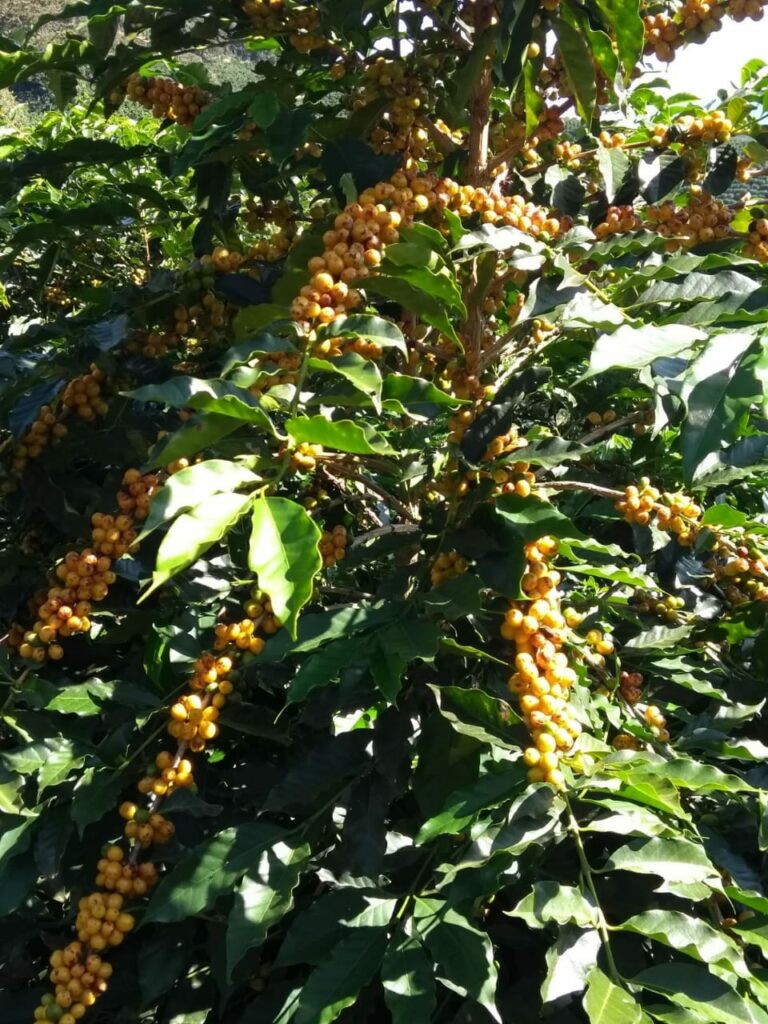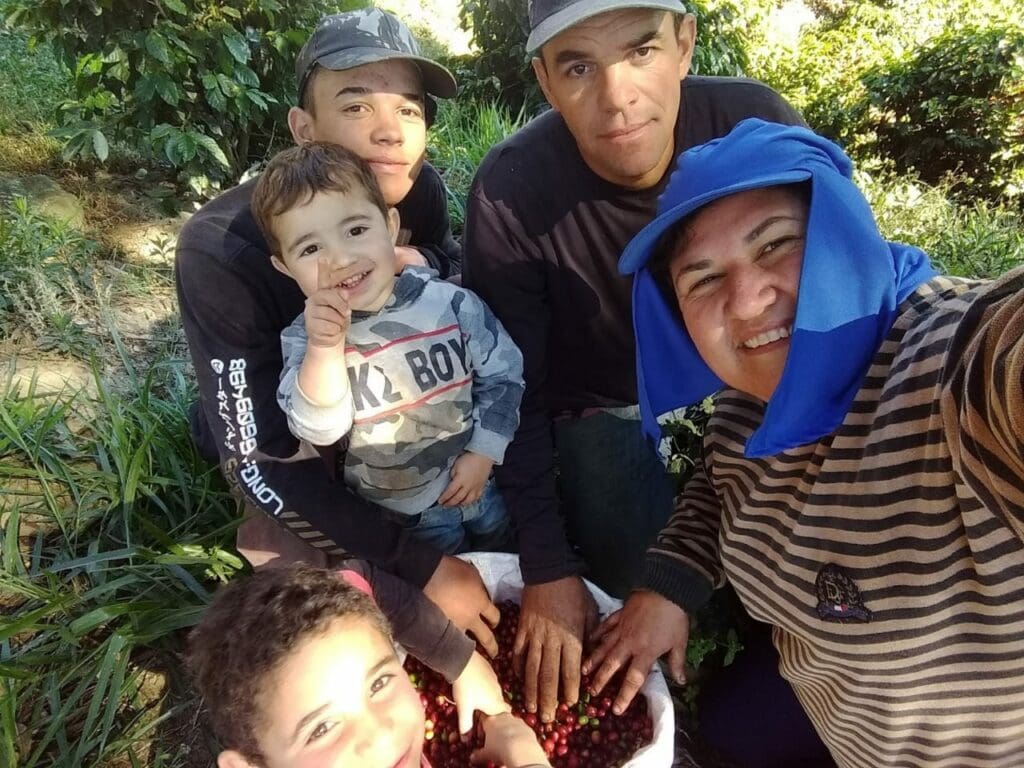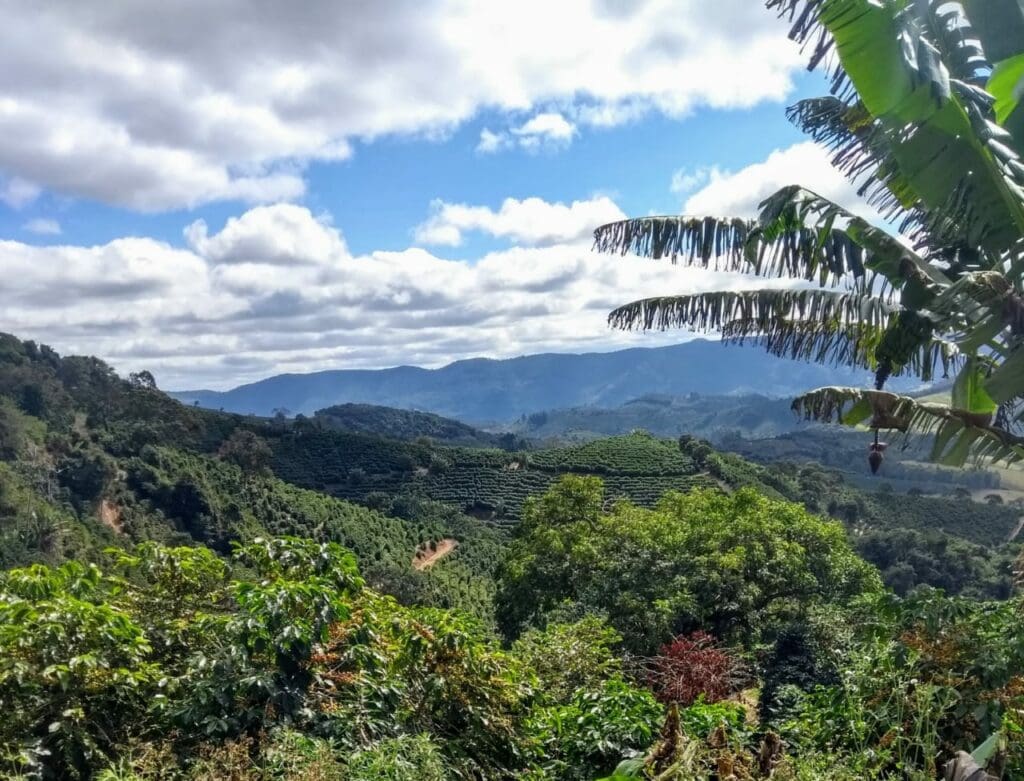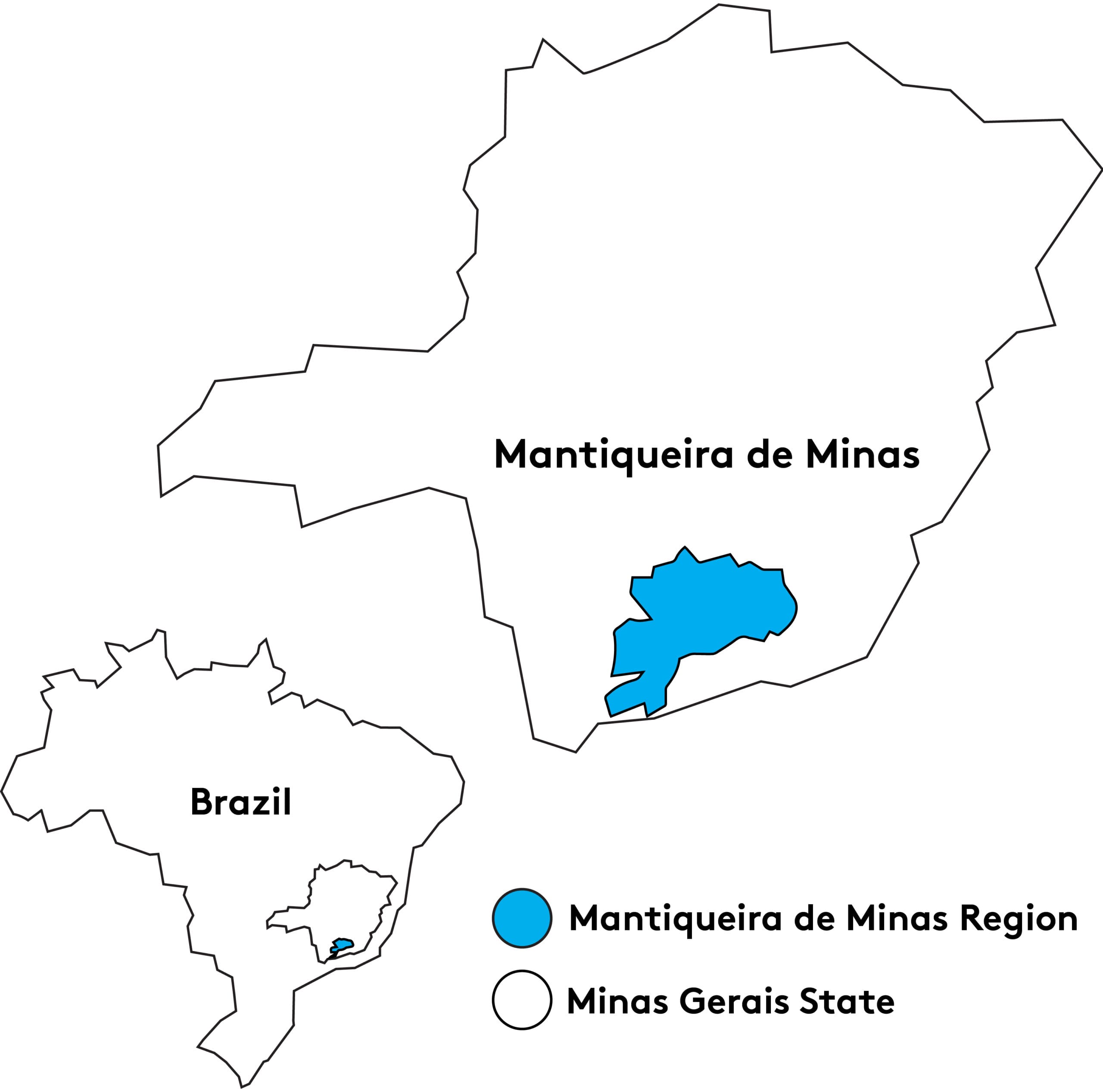Isabel Aparecida de Oliveira is a third generation coffee producer in the Mantiqueira de Minas region of Brazil. Together with her husband and three children, she began producing coffee originally on rented land. In 2009 however, they were able to buy their own farm with coffee already in production. The family now grows coffee across 2.15 hectares of land on their farm Sítio Água Limpa do Congonhal.
The farm is Rainforest Alliance certified. Production includes Yellow Catucaí, Red Catuai, and Yellow Catuai varieties, totalling 80 bags of coffee annually. This particular lot of Yellow Catuai underwent Natural processing. Catuai was developed by the Instituto Agronomico (IAC) of Sao Paulo State in Campinas, Brazil by crossing Mundo Novo and Caturra varieties. Catuai coffees are cultivated widely across Brazil, and are known for their high productivity potential.
This coffee was one of the top 10 entries in a competition held by AMECAFÉ Mantiqueira (The Association of Coffee Women Entrepreneurs in Serra da Mantiqueira) in October 2020. The association was founded in 2017 and now includes 130 producers, providing professional development and other events for women producers in the region.



